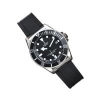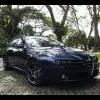Search the Community
Showing results for tags 'actually'.
-
Getting my new ride this Sunday. After reading quite a handful of issues encountered by people driving the same car, I am getting a bit paranoid. Since the implementation of Lemon Law in 2012, just wondering: 1. Has anyone actually invoked it? 2. How did the situation get resolved?
-
Ongoing argument about whether Singaporeans really own their HDB flats, or whether they're just renting them on a lease. One thing that tips the balance in favour of the latter argument is the fact that the HDB has the right to confiscate or repossess your flat if you do something unacceptable i...
- 153 replies
-
- 1
-

-
I found this interesting read from one of the online article. Share with you guys and see what you all think. Why incompetent people often think they’re actually the best There’s a psychological phenomenon behind it: the Dunning-Kruger effect.Source: https://www.vox.com/science-and-health/201...
- 38 replies
-
- 11
-

-
- incompetent
- productivity
-
(and 7 more)
Tagged with:
-
http://www.channelnewsasia.com/news/singapore/lawyer-eugene-thuraisingam-fined-s-6-000-for-contempt-of-court-9099504 I wonder if someone will set up a fund to pay for his 6k fine
-
Think before dumping parents in home Those who dump their parents in homes ought to realise that they will eventually meet the same fate, says this writer. my paper By Ronnie Poon In the corporate and business world, it is called succession planning when staff with potential are...
-
Food colouring, not chemicals, was in the indelible ink used in the general election, the Election Commission (EC) admitted today in the Dewan Rakyat. "No chemical was used in the ink but it was instead replaced with permitted food colouring," said Minister in the Prime Minister's Department Da...
-
http://www.smh.com.au/travel/travel-incide...0110-2ciu0.html So the Samuel L Jackson movie wasn't fictional after all! Crazy stuff, and a big snake too.
-
I am posting this not because I bought a just gotten a Satria Neo. But having test drive other hatch backs like Swift and Jazz, I must say for the price its not a bad car. It handles very well with its stock suspension and good high speed stability. Even at 190KM/H, can feel the car hugging the...
-
I didn't know this till today and I must say I am surprised. http://www.porsche.com/usa/aboutporsche/po...y/variocamplus/ This is the Variocam plus variable valve lift technology used in Porsche engines. Its actually the same system use by by Proton in their Campro CPS engines and its lice...
-
in fact, if you guys and gals notice in s'pore or elsewhere, most of the self made big tks are boh tak che or have actually little formal eduacation. they still succeed in their respective busineses. the degree holders, including the first class honors holders end up working for the boh tak che...
-
http://www.businesstimes.com.sg/mnt/media/...0/semodel20.jpg Look at the sales for premium cars vs bread and butter cars....... Within the top 10, only b&b cars are Altis and Forte (camry is more luxury). but these 3 add up is even less than BMW 5 series....lol...... So I am wonder wh...
-

WTF! I Didn't Know Crude Oil Actually Taste Sweet!
Crazecow posted a topic in General Car Discussion
http://en.wikipedia.org/wiki/Sweet_crude_oil I always wonder what is light sweet crude oil being traded at Nymex.... After some googling, now I know. Low levels of sulphur gives the oil a sweet taste and nice smell...... And people back then actually taste the oil to determine its quality........ -
as above.
-
Just to refresh the list to see who are the members that are still active in skoda forum. Here are those which I think still active. "Active" as in not few months post one time that kind. Feel free to add on if I have left your name out. 1. Lightspeed 2. Taishi 3. Othello 4. Try_conti 5. Ech...
-
Please ignore previous post, the 0 did not appear some how. Also, only those who answered the poll how many kids is ideal for a family should answer so as to have a more accurate result. Why this poll? well there is ideal and there is reality.
-
jus realise that the red dots on my ride was actually red dye from the plane that flew through my area..... intially still tot that was some red ink that got on my ride. This morning came to know from newspaper that it was red dye that drop from airplane....siao liao any bro/sis encounte...
-
Recession in US economy? Caroline Baum Thu, Nov 29, 2007 The Straits Times EVERYWHERE you turn in the US today, recession is staring you in the face. The Sunday New York Times featured a story on the prospects for recession. The following day, the Wall Street Journal ran a re...
-
With the 2% increase in GST looming on the horizon, how much is the increase going to affect car prices? Here's the official guide from LTA. Don't let the dealers and agents prey on your ignorance! gstguideformotortraders.pdf
-
I got some braided brake hose for my ride. My car manual states brake fluid as approx. 0.4L. How much brake fluid should I buy and bring to workshop who will replace the hoses for me? Do I bring a 500ml bottle or will they need more taking bleeding etc into consideration? Any advise is appre...
-
Good morning, Brothers I'm sure that in the course of our car ownership, fuel additives are definitely one of the most marketed products at the service workshops. Question is, are the chemicals as efficacious as what the manufacturers claim them to be? An episode of 'MythBusters' screened on D...
-
The new Volkswagen long-wheel based Passat looks to uncanningly like a Superb with an Audi A4-looking behind? But anyways by right the Superb is based of the original Passat, are they a long running production line, especially that now that Volkswagen in China is picking up production of Skodas in C...
- 9 replies
-
- Volkswagen
- Long
- (and 6 more)
-
Anti-roll Bars The primary function of anti-roll bars is to reduce body roll by adding to the roll resistance of the springs. An anti-roll bar, also referred to as a stabilizer or sway bar, is a bar or tube which connects some part of the left and right sides of the suspension system. On ind...

















